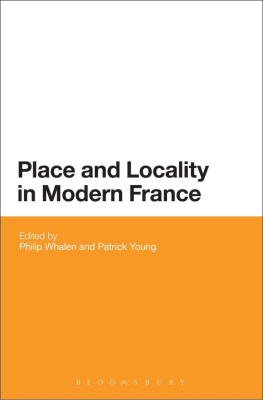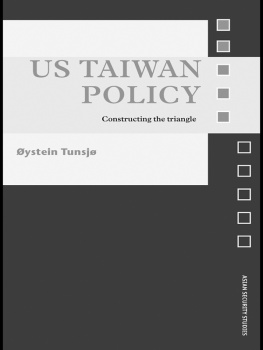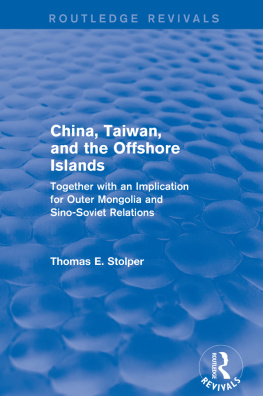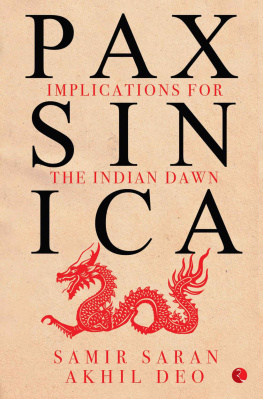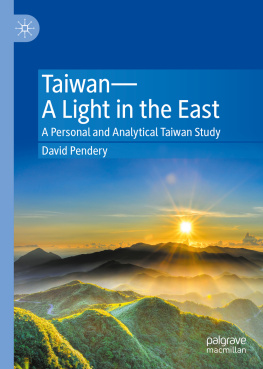Acknowledgments
Most of the essays in this collection were first presented at the International Conference on Religion and Locality in the Chinese World held at the Australian Centre on China in the World, The Australian National University, in August 2013. This volume is a collaboration between the Australian Centre on China in the World and the Institute of Ethnology, Academia Sinica, and the editors and contributors wish to express their appreciation to these two institutes for helping to bring this volume to fruition. The editors also wish to thank Vincent Goossaert for allowing us to include a translated version of his essay in this volume. As the scholars who have contributed chapters come from across the world, and work in different contexts, we have not insisted on them using either the pinyin or Wade-Giles systems of romanisation, or one variety of English spelling. In addition, the names of some particular historical or contemporary figures are given in romanisations that do not follow either of these systems this occurs only when that person themselves chose to render their name in a specific way.
Introduction
Chang Hsun, Benjamin Penny
This book explores how religion is and has been created, transmitted, embodied and transformed in specific locations in late imperial, modern and contemporary Taiwan and China. Locating research not only on temples, mosques, churches, schools, coffee shops, festival sites, burial grounds and shrines, but also cities, neighbourhoods, counties and districts, it explores the rich, and often overlooked, details that fill the lived experience of people doing religion. Seeking to focus on interactions between place, text and agency, we aim to ref lect on the layered and specific histories that develop as a consequence of this interplay. By reducing the scale of our studies to a specific locale, phenomena such as religious change, conversion practice, individual transformation and the transmission of texts, authority, and charisma, can be reappraised.
The contributors to this volume explore questions such as: How do the particular circumstances of time and place shape religious experience? What is specific to a location that inf luences the nature of religious practice there? What religious power is embodied in a place? How are narratives created around a location? What is characteristic of the religious world in a particular place? In particular, and in different ways, they ask how and why individual texts or sets of texts are transmitted in a particular place at a particular time, how such specific circumstances inf luence the transmission of authority within a group (or help to disperse that authority), and how authority and charisma are related to specific locations.
Religion in Taiwan and China: Locality and Transmission
Responses to questions such as these might be informed by the practices of microhistory, theories of the everyday, and ethnographies of small places. In doing so, we hope they offer alternative perspectives on the sacred world. We demonstrate, in this volume, that religious experience is not homogenous across geography, and that even comparatively small distances can produce meaningful differences in institutions and practices, in particular those associated with its transmission. Sharpening the focus of research to a county, district, neighbourhood, or particular numinous site makes possible an examination of the relations between particular places and institutions of authority based locally or distantly.
Religion is never general. It is always embodied and emplanted. It does not exist but for the people who do it: they are always somewhere, and they received their teachings or the way the do religion from someone, some people, or some community. Religions are not texts or doctrines in and of themselves, they are texts people read or have read to them, and the doctrines those people embody; they are the teachings people pass on from one to another orally, textually, or corporeally, and the authority to teach how the doctrines are made manifest in behaviour.
When students with an English-language background learn Chinese, or students from a Chinese-language background learn English, they are taught that religion translates as zong jiao. But as with many words that entered the Chinese language in modern times, religion and zong jiao never mapped onto each other neatly, and arguably have diverged in meaning ever since the adoption of the Chinese word in its modern sense. Most of those Westerners who lived in China through the nineteenth and early twentieth centuries who were interested in and wrote about religion were missionaries, and those who were not were typically adherents to one or other varieties of Christianity. Often their studies of Chinese religions were designed to better the propagation of Christianity. Understandably, the Christian idea of what constituted religion and more specifically the Protestant Christian idea was used to understand and evaluate Chinese religious institutions, texts, and behaviours. This is not to say that this scholarship on Chinese religions was not valuable: James Legges (1815-1897) studies and translations from when he was in China and later as Professor of Chinese at Oxford University, Joseph Edkinss (1823-1905) pioneering work on Chinese Buddhism, Henri Dors (1859-1931) extraordinary eighteen volume Recherches sur les superstitions en Chine are monuments to scholarship by missionaries.
In the early twentieth century, non-clerical scholars, even those who had lapsed from the religion in which they were brought up still conceived of Chinese religions in similar terms. Milestones in the field by these figures include J. J. M. de Groots (1884-1921) six-volume study based on his observations in Amoy, Marcel Granets (1884-1920) analysis of ancient Chinese religion, festivals and songs through the Book of Songs (Shijing ), and arguably Max Webers The Religion of China (1915).
At the same time, in the late nineteenth and early twentieth centuries, the Chinese-language equivalent of religion, namely zong jiao began to gain popularity. As Mayfair Yang wrote, From the first uses of this term in China, the notion of religion was closely linked with the notion of Christianity, and they were often taken to refer to one and the same thing, with the consequence that throughout the twentieth century in China, ideas of religion implicitly took Christianity, and more specifically Protestantism, as the standard and quintessential model of religion (Yang 2008:11-12). In other words, what became defined as zong jiao was limited to certain sorts of what we would now regard as undeniably religious. However, as even limited observation makes clear, the way religions are done in Taiwan and China is far more various than these categories allow. Nonetheless, there is power in terminology and after a century of usage, this Protestant version of zong jiao has had an impact on Chinese ideas of religion, especially for those who attended a church school or those with higher education. This idea of religion has been transmitted in textbooks, academic and popular publications, and through the mass media and has, of course, had serious consequences for the administration of religion throughout the twentieth century on both sides of the Taiwan Strait, and continues to do so.



